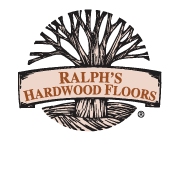Patterned floors are making a comeback as one of the popular flooring designs. They are significant interior pieces that create a distinguished look to highlight any room.
Chevron and Herringbone hardwood are the most common type of patterned floors. Both floors are made from thin, long planks that create a tight pattern depending on the interior’s space. Although they might look pretty similar, both of these patterned floors are different in design and origin.
Herringbone History
The name “Herringbone” originated from the resemblance to the bone structure of a herring fish. A herringbone pattern is an arrangement of rectangular blocks that emerged during the Roman Empire, used as paving systems to make the roads more stable. Fast forward to the 16th century, this pattern was adapted into wood flooring. The first known example can be observed in the Francois 1 Gallery at the Château de Fontainebleau in France.
Chevron History
The Chevron is known to have an inverted V-shaped pattern. In an aligned fashion, it makes the floor resemble a long line of straight arrows. This pattern can be traced back to ancient pottery designs from Knossos, Crete, which dates back to the Bronze Age. In the 16th century, Europe was where this pattern transitioned as a flooring design.
Herringbone Vs. Chevron
At first glance, herringbone and chevron patterns seem to be nearly identical; however, if you look closely at the details, you will see that both patterns are nothing alike. With these two, it’s all about the angles. For example, the herringbone pattern planks’ ends are cut at a 90° angle, while the Chevron’s planks are cut at a different angle. It might not look like much, but this is what separates one from the other. Also notable is that the Herringbone pattern’s design looks like a broken zig-zag, while the Chevron pattern’s design has a seamless zig-zag with each side meeting point to point.
Why Choose Chevron
- Adds an instant luxurious European design feel that has visually distinctive lines.
- Creates visual interest through diagonal lines.
- Creates a feeling of movement through the ‘arrows’ that are created where the boards meet.
- Produces a dramatic effect, even when less exotic wood is used.
- It looks trendy, fashionable, and classic.
- If you prefer to have a modern look on your interior, you can create a Scandinavian-style chevron wood floor using light wood and larger planks.
Why Choose Herringbone
- Requires fewer cuts, which means less wood is wasted.
- Creates a more subtle pattern than chevron.
- Provides visual interest without being distracting.
- Considered as a more classic and traditional flooring design.
- If you prefer to have a very traditional wooden floor, a herringbone patterned floor in a rich dark wood compliments with your floor design.
- For office spaces or ultra-modern home flooring, a stylish grey herringbone wood floor is a modern industrial twist on the classic ones, which makes it the best choice.
As mentioned, both patterned floors have similarities, but each has its own character. They’re both stylish and timeless and can be made in various colors and sizes that allow you to create an eye-catching effect for your zig-zag-inspired wooden floor.















